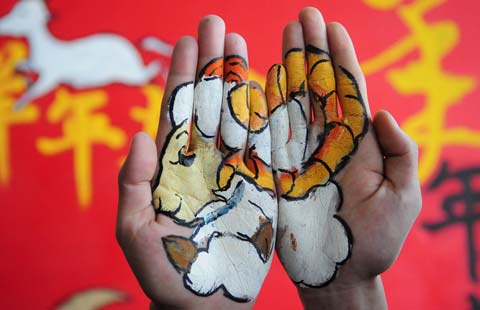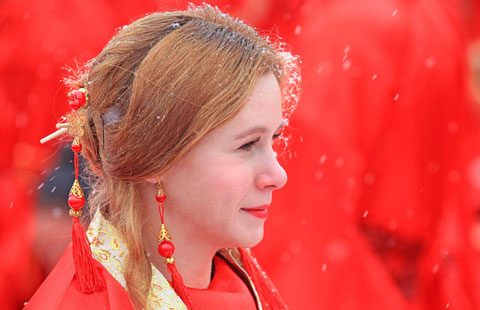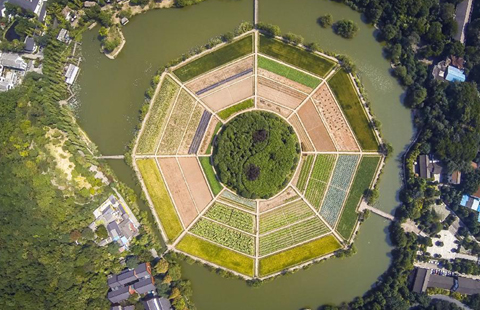Sacred craft dwindles
Updated: 2015-03-13 13:00
By Huntsog Tashi and Palden Nyima in Lhasa(China Daily USA)
|
||||||||
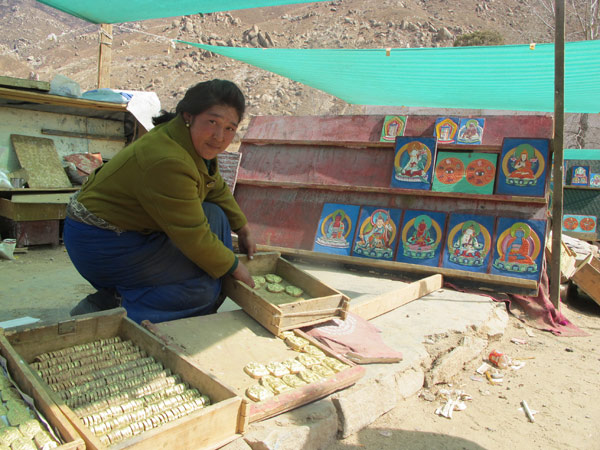 |
|
Losang Choedron, 31, from Tibet's eastern Qamdo prefecture, makes and sells tsa-tsa in her workshop next to Tibet's Nechung Monastery. Palden Nyima / China Daily |
Tsa-tsa figures are votive clay images that are deposited as offerings within stupas, holy caves and monastery altars in the Himalayas and other sacred places. Impressions in the clay are made with a metal reverse-image engraving of a hallowed deity or sacred symbol. The stamped images are dried in the sun and in some cases fired into the hardness of pottery.
Tibetans buy tsa-tsas especially during festivals such as Tibetan New Year, the Yogurt Festival and the fourth month of the Tibetan calendar.
Losang Choedron, 31, a native of Tibet's eastern Qamdo prefecture, has been working as a tsa-tsa maker for four years.
"The purpose of creating and offering tsa-tsas is to pray for the happiness of all living beings and peace in the world," Losang explained.
Along with Losang, 12 other tsa-tsa makers work in a studio next to Tibet's Nechung Monastery. They are mostly from Kham areas, such as Qamdo, Sichuan's Dege prefecture and Qinghai's Yushu prefecture.
Tsa-tsa makers consider their work a benevolent activity that is auspicious for their families and the immediate area where the work takes place, local Tibetan residents said.
Traditionally all Tibetans made tsa-tsas, but nowadays most households no longer have the skill. Losang said creating tsa-tsas is what she knows, and she chooses to do it as a way to make a living. She hopes her two children can get a better education than she had.
She said her work is hard, and she hopes her children do not follow her in her career.
"This work is almost as hard as work on a construction site. But we do it because we love it," she said.
Losang and her colleagues each create an average of 200 to 500 tsa-tsas a day.
"The work is done only during good weather with sunshine, because it's easier for the clay to keep its shape," said Lhamo, 22, another tsa-tsa maker.
Different tsa-tsas show different deities, images of Buddha and stupas in five colors - blue, white, yellow, red and green, representing sky, cloud, earth, fire and water.
"Most Tibetans order Tse Lha Nam Sum - the Three Divinities of Longevity, which are Amitayus, White Tara and Namgyalma," said Losang.
She said people offer divinities of longevity because they want all sentient beings to stay healthy and enjoy a long life.
Tsa-tsas sell for one to 10 yuan (16 cents to $1.60) each. If a customer cannot afford the price, there is always a room for negotiation.
Lhamo said materials include Tibetan rap oil, grain and red clay. "Normally, tsa-tsas have seven different shapes, such as square, triangle, round and spiky," she said.
"Most of our customers are Tibetans, but an increasing number of tourists have become our buyers in recent years," she said.
Pilgrims to the Nechung Monastery place tsa-tsa tablets in a tsa-khang - a giant natural grotto - on a hill behind the monastery.
Italian Tibetologist Giuseppe Tucci's book on stupa says the Sanskrit root of the word tsa-tsa points to India as a place of origin.
From there, it went to the Middle East and represents a survival of an extremely ancient practice going back perhaps several thousand years, Tucci wrote.
But members of the new generation, even very young ones, see other options in modern times.
"I don't want to learn how to make tsa-tsas. I want to go to school," said Tenzin Norbu, Losang's 5-year-old son, who is in kindergarten.
Contact the writers at palden_nyima@chinadaily.com.cn.
- Iraqi forces battle Islamic State for Tikrit on two fronts
- Venezuelans march in solidarity with govt
- Downton Abbey fan Kate Middleton visits set of hit TV show
- UK fantasy author Terry Pratchett dies
- Indian Prime Minister arrives in Sri Lanka on state visit
- Top diplomats set to meet to discuss China, Japan, South Korea summit
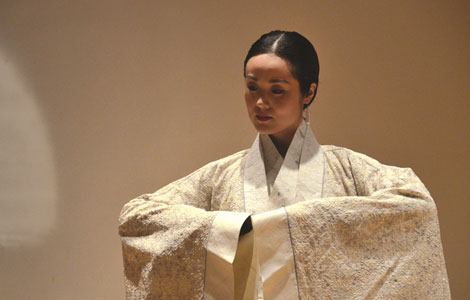
 Across America over the week (from March 6to March 12)
Across America over the week (from March 6to March 12)
 Money man
Money man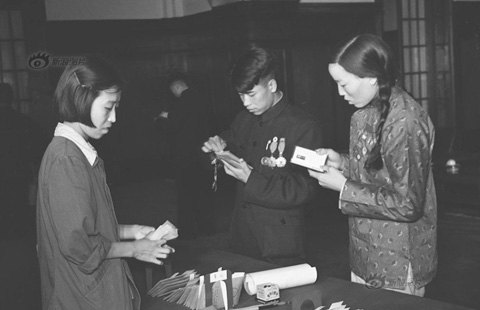
 14 firsts in history of 'two sessions'
14 firsts in history of 'two sessions'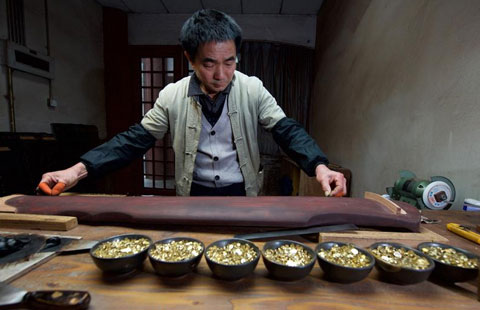
 Zither village: Producer of musical charm
Zither village: Producer of musical charm
 Top 10 largest new international plants in China
Top 10 largest new international plants in China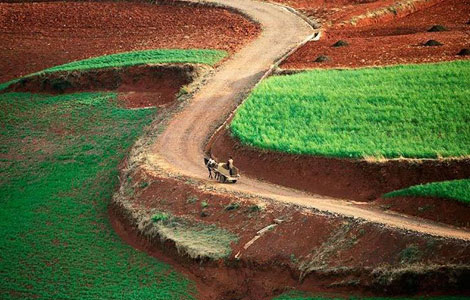
 Picturesque scenery of red earth in Yunnan
Picturesque scenery of red earth in Yunnan
 E China villagers snatch fake goods to be destroyed
E China villagers snatch fake goods to be destroyed
 Across Canada March 13
Across Canada March 13
Most Viewed
Editor's Picks

|
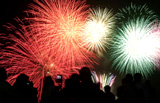
|
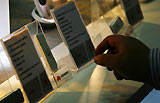
|
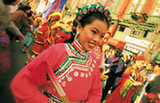
|

|

|
Today's Top News
China top attendee at investment summit
China has huge growth potential: Experts
72% worry about retirement life
Apple Watch clones surface in China
Nation open to US pivot
Small Chinese firms discovering OTCBB market
Tencent, US firm join on e-books
Strong US dollar impacts world trade
US Weekly

|

|


